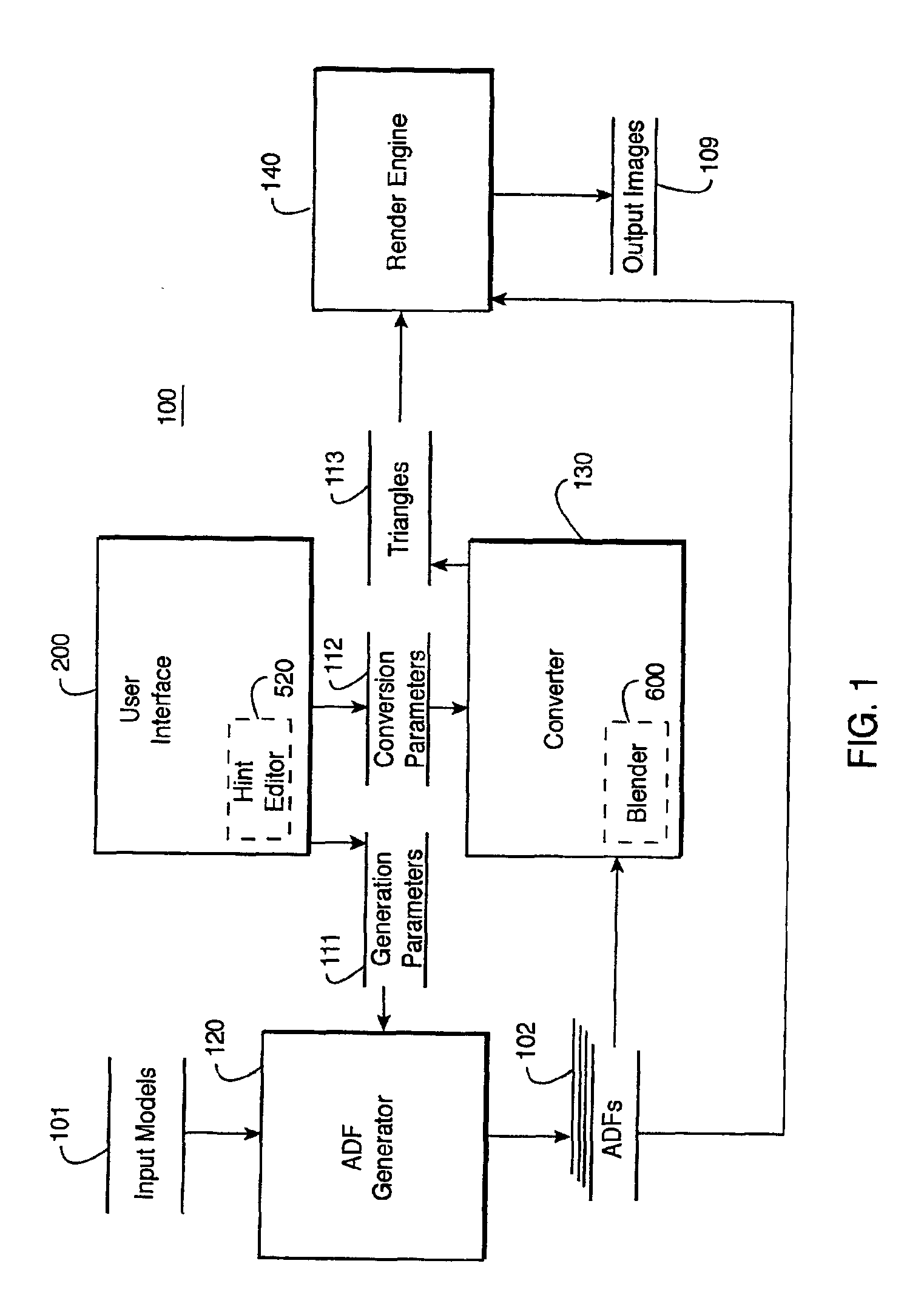Modeling and combining multiple graphics objects
a technology of multiple graphics objects and models, applied in the field of computer graphics, can solve the problems of discontinuity of many of these methods, poor performance, and limited number of polygons that can be stored and processed interactively by hardware and softwar
- Summary
- Abstract
- Description
- Claims
- Application Information
AI Technical Summary
Benefits of technology
Problems solved by technology
Method used
Image
Examples
Embodiment Construction
System Overview
[0030]Our invention provides a method and system for interactively transforming computerized models with simple controls. The user can select important topological features, and provide geometric hints to guide the modeling process at variable levels-of-detail. The invention also allows the user to blend models having different levels of resolution, and perhaps different shapes, while minimizing error, and maximizing quality in the final result.
Adaptively Sampled Distance Fields
[0031]In the preferred embodiment, we represent the input model, having any number of dimensions and a fixed level-of-detail, by an adaptively sampled distance field (ADF). The basic data structure of the ADF is described in U.S. patent application Ser. No. 09 / 370,091 “Detail-Directed Distance Fields” filed by Frisken et al. on Aug. 6, 1999, incorporated herein in its entirety by reference.
[0032]There, the ADF data structure is introduced, basic methods for generating, rendering, and modifying ...
PUM
 Login to View More
Login to View More Abstract
Description
Claims
Application Information
 Login to View More
Login to View More - R&D
- Intellectual Property
- Life Sciences
- Materials
- Tech Scout
- Unparalleled Data Quality
- Higher Quality Content
- 60% Fewer Hallucinations
Browse by: Latest US Patents, China's latest patents, Technical Efficacy Thesaurus, Application Domain, Technology Topic, Popular Technical Reports.
© 2025 PatSnap. All rights reserved.Legal|Privacy policy|Modern Slavery Act Transparency Statement|Sitemap|About US| Contact US: help@patsnap.com



